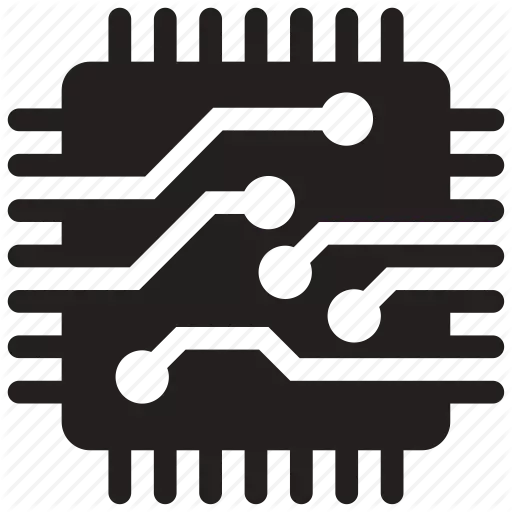
Increased load on the central processor causes braking in the system - applications are opened longer, data processing time increases, freezes may occur. To get rid of it, you need to check the load on the main components of the computer (first of all on the CPU) and reduce it until the system does not earn normally.
Causes of high load
The central processor loads open heavy programs: modern games, professional graphic and video edits, server programs. After completing work with heavy programs, be sure to close them, and do not turn them out, thereby save the computer resources. Some programs can work even after closing in the background. In this case, they will have to close through the "Task Manager".If you are not included any third-party programs, and a high load is on the processor, then there may be several options:
- Viruses. There are many viruses that do not have significant damage to the system, but at the same time heavily load it, making the usual work difficult;
- "Taught" registry. Over time, the OS operations accumulates various bugs and garbage files, which in large quantities can create a tangible load on PC components;
- Programs in "autoload". Some software can be added to this section and loaded without a user's knowledge along with Windows (the greatest load on the CPU occurs during the start of the system);
- Accumulated dust in the system unit. By itself does not load the CPU, but is able to cause overheating, which reduces the quality and stability of the central processor.
Also try not to install programs that do not fit your computer for system requirements. This software can relatively normally work and start, but it has a maximum load on the CPU that over time heavily reduces the stability and quality of work.
Method 1: Clearing "Task Manager"
First of all, see what processes take the most resources from the computer, if possible, disconnect them. Similarly, you need to do with programs that are loaded with the operating system.
Do not disconnect system processes and services (have a special designation that distinguishes them from others), if you do not know which function they are performed. Disable only user processes are recommended. You can disable the system process / service if you are confident that it does not entail a reboot of the system or black / blue death screens.
The instruction on the disconnection of unnecessary components looks like this:
- Combination CTRL + SHIFT + ESC keys to open the "Task Manager". If you have a Windows 7 or an older version, then use the Ctrl + Alt + Del key combination and select "Task Manager".
- Go to the Processes tab, at the top of the window. Click "More", at the bottom of the window to see all active processes (including background).
- Find those programs / processes that have the greatest load on the CPU and disconnect them by clicking on them with the left mouse button and choosing to "remove the task" at the bottom.
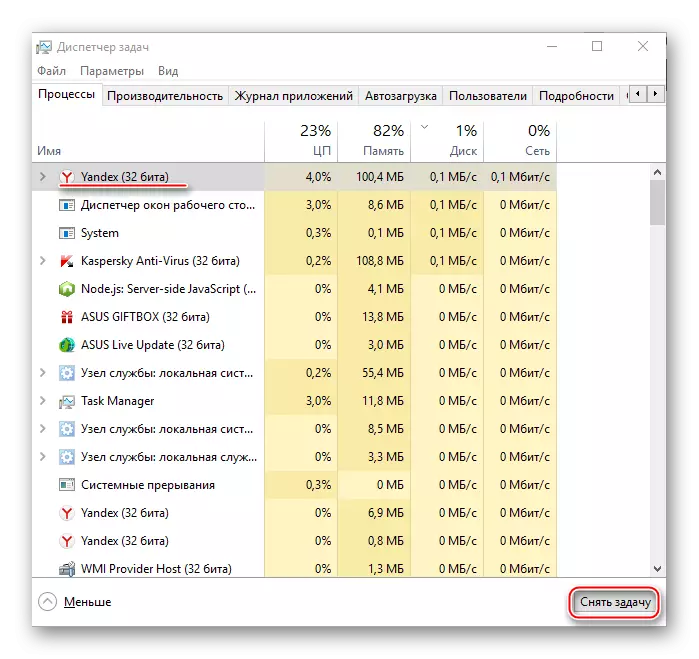
Also through the "Task Manager" you need to clean "autoload". You can do it like this:
- At the top of the window, go to "Auto load".
- Now select programs that have the greatest load (written in the "Impact on Start" column). If you do not need that this program is loaded with the system, select it with the mouse and click on the "Disable" button.
- Do paragraph 2 with all the components that have the greatest load (if you do not need them so that they are loaded with OS).
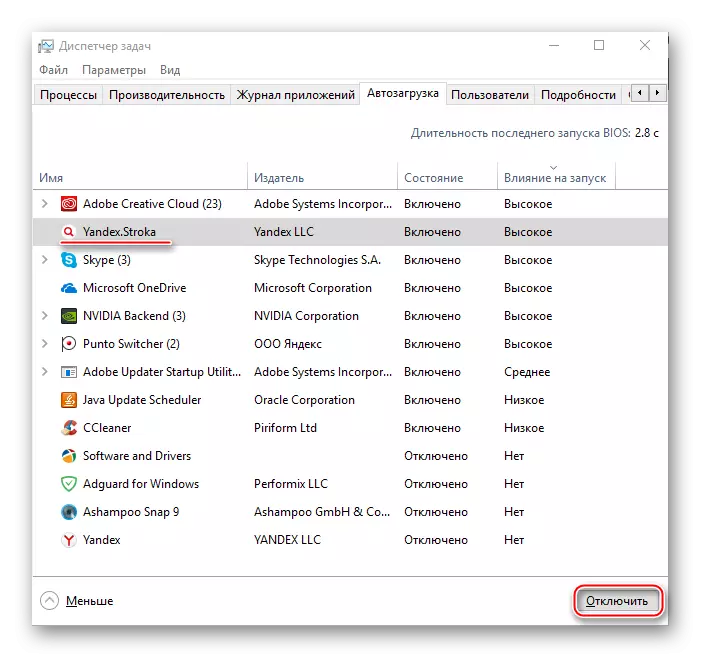
Method 2: Registry Cleaning
To clear the registry from bat files, just download special software, for example, CCleaner. The program has both paid and free versions, fully Russified and easy to use.
Lesson: How to Clean Rest With Help CCleaner
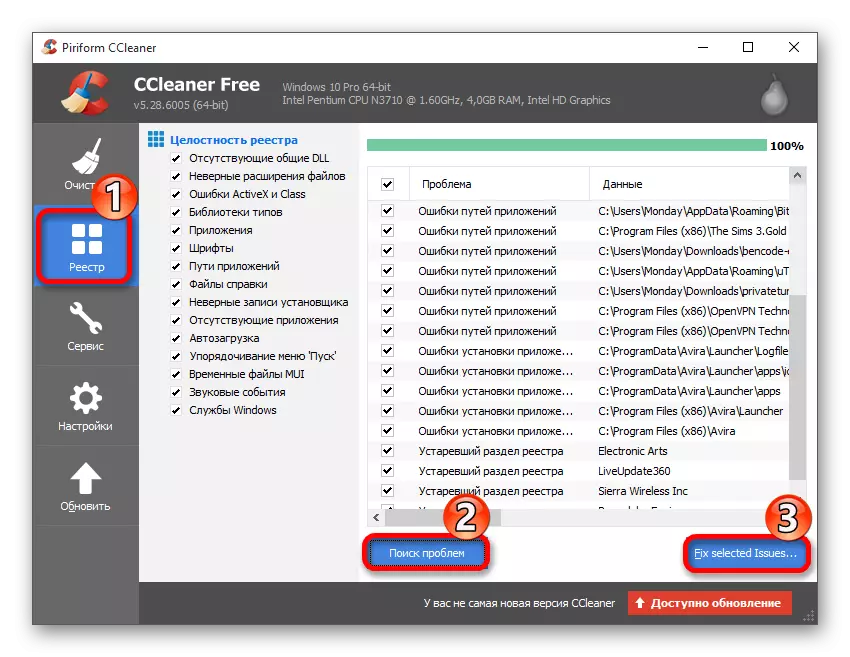
Method 3: Removing viruses
Small viruses that load the processor, concealed under various system services, very easily removed using almost any high-quality antivirus.
Consider cleaning the computer from viruses using the example of Kaspersky Anti-Virus:
- In the antivirus window that opens, find and go to "Check".
- In the left menu, go to "Full Check" and run it. It can take several hours, but all viruses will be found and removed.
- Upon completion of Check, Kaspersky will show you all the suspicious files found. Remove them by clicking on a special button opposite the name.
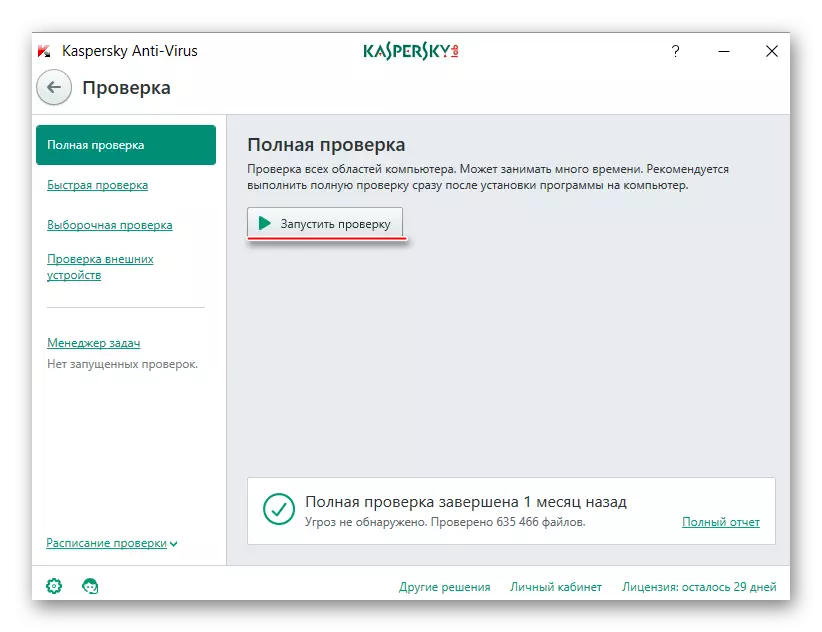
Method 4: Cleaning the PC from dust and replacement Thermal Past
By itself, dust does not load the processor, but it is capable of clogging into the cooling system, which will quickly cause overheating of the CPU cores and will affect the quality and stability of the computer. You need a dry rag for cleaning, preferably special napkins for cleaning PC components, cotton sticks and a low-power vacuum cleaner.
Instructions for cleaning the system unit from dust looks like this:
- Turn off the power, dismantle the system unit cover.
- Wipe the napkin all the places where you find dust. Difficult locations can be cleaned with a unwanted tassel. Also at this step you can use a vacuum cleaner, but only at minimum power.
- Next, dismantle the cooler. If the design allows you to disconnect the fan from the radiator.
- Clean these components from dust. In the case of a radiator, a vacuum cleaner can be used.
- While the cooler is removed, remove the old layer of thermal paste with cotton wands / disks dipped in alcohol, and then apply a new layer.
- Wait 10-15 minutes while the thermal paste is dry, and then install the cooler in place.
- Close the system block cover and connect the computer back to the power supply.
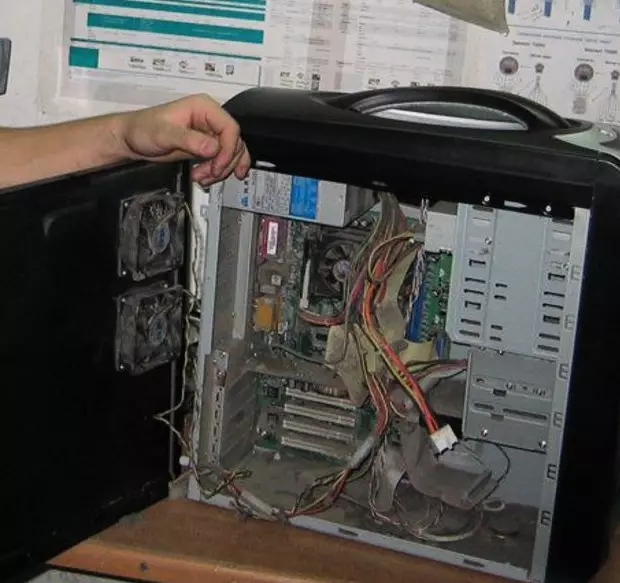
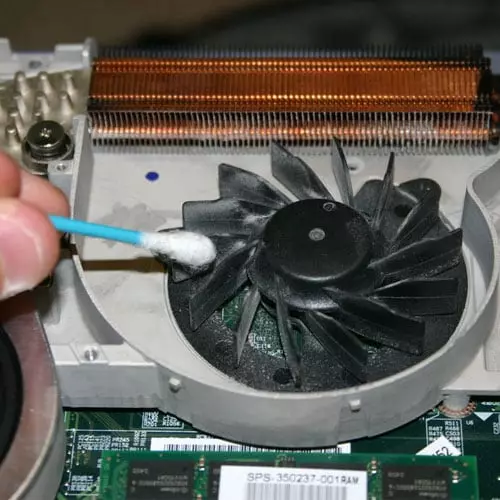
Lessons on the topic:
How to remove cooler
How to apply thermal
Using these tips and instructions, you can significantly reduce the load on the central processor. It is not recommended to download various programs that allegedly accelerate the work of the CPU, because You will not get any results.
